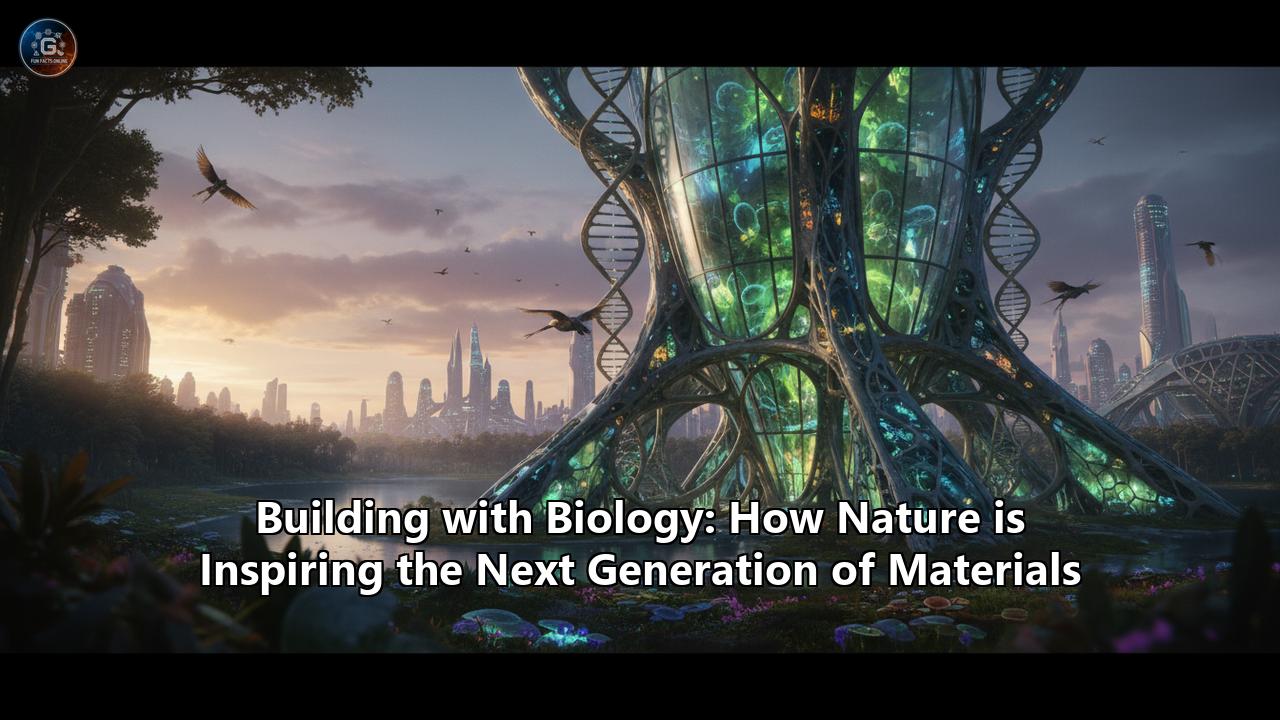used to create a small patch of gecko-inspired adhesive may not be economically viable for producing it by the square meter.
Cost and Manufacturing: The Bottom Line
Another major challenge is the cost of developing and manufacturing biomimetic materials and technologies. Research and development in this field is often expensive and time-consuming, and there is no guarantee of success. And even when a new biomimetic product is developed, it may be too expensive to compete with conventional products.
Self-healing concrete, for example, is a promising technology, but it is currently much more expensive to produce than conventional concrete. This is a major barrier to its widespread adoption, especially in an industry like construction where cost is a primary concern.
Ethical Considerations: Reading the Book of Nature Responsibly
As we become more adept at reading and interpreting the book of nature, we must also consider the ethical implications of our actions. The knowledge that we gain from the natural world is a precious resource, and we have a responsibility to use it wisely and fairly.
Biopiracy: The Question of Ownership
One of the most pressing ethical issues in biomimicry is the question of biopiracy. This is the practice of taking knowledge from indigenous communities or developing countries without permission and without sharing the benefits. For centuries, traditional communities have been using their knowledge of the natural world to develop everything from medicines to building materials. As corporations and researchers from developed countries increasingly look to nature for inspiration, there is a risk that this traditional knowledge will be exploited without fair compensation.
To address this issue, it is crucial that we establish clear and equitable guidelines for accessing and using traditional knowledge. This includes obtaining prior informed consent from the communities involved and ensuring that they share in the benefits that arise from the use of their knowledge.
Unintended Consequences: The Ripple Effect
Another important ethical consideration is the potential for unintended consequences. New technologies can have a ripple effect, creating unforeseen social and environmental problems. For example, a new biomimetic material that is designed to be more durable could also be more difficult to recycle, leading to a new waste problem.
To mitigate this risk, it is important that we take a holistic and long-term view when developing new biomimetic technologies. This includes conducting thorough lifecycle assessments to understand the full environmental and social impact of a product, from cradle to grave.
The Future is Bio-Inspired: A Glimpse of What's to Come
Despite the challenges, the future of biomimicry is bright. Advances in fields like artificial intelligence, nanotechnology, and 3D printing are making it easier and more affordable to study and replicate the designs of nature.
AI and Machine Learning: Accelerating Discovery
Artificial intelligence and machine learning are revolutionizing the way that we do science. These powerful tools can be used to analyze vast amounts of data and to identify patterns and relationships that would be impossible for a human to see. In the field of biomimicry, AI and machine learning are being used to accelerate the discovery of new bio-inspired designs.
For example, researchers can use AI to scan through a database of biological structures and to identify those that are best suited to a particular engineering problem. They can also use machine learning to optimize the design of a biomimetic material, creating a material that is even better than the natural model.
A Vision for a Bio-Inspired Future
As we continue to learn from the genius of nature, we are moving towards a future where our materials, our buildings, and our systems are in harmony with the natural world. This is a future where our cities function like forests, where our industries are powered by the sun, and where our products are designed to be recycled and reused, just as they are in nature.
This is a future where we are not just inhabitants of this planet, but true partners with it. A future where we have finally learned to build with biology.
Conclusion: A Symbiotic Future
The journey into the world of biomimicry is more than just a quest for new materials and technologies. It is a fundamental rethinking of our relationship with the natural world. For too long, we have viewed nature as a resource to be exploited, a force to be tamed. But as we stand on the precipice of a new material age, we are beginning to see nature in a new light: as a mentor, a guide, and a source of profound wisdom.
The lessons from nature are all around us, in the elegant architecture of a seashell, the intricate dance of a flock of birds, the silent efficiency of a forest. By learning to read and interpret these lessons, we can create a future that is not just more technologically advanced, but also more sustainable, more resilient, and more beautiful.
The path ahead is not without its challenges. The complexity of nature is humbling, and the task of replicating its genius is a formidable one. But with each new discovery, with each new bio-inspired innovation, we are moving closer to a future where humanity and nature are not at odds, but are partners in a symbiotic dance.
This is the promise of building with biology: a future where our creations are as elegant, as efficient, and as life-affirming as the natural world that inspired them. A future where we have finally learned to live in harmony with our planet, not as its masters, but as its humble and grateful students.
Reference:
- https://www.springerprofessional.de/en/challenges-and-future-perspectives-of-biomimetic-materials-for-b/26708184
- https://www.frontiersin.org/journals/materials/articles/10.3389/fmats.2023.1283163/full
- https://editverse.com/biomimetic-materials-learning-from-natures-designs/
- https://pmc.ncbi.nlm.nih.gov/articles/PMC10817481/
- https://pmc.ncbi.nlm.nih.gov/articles/PMC2271038/
- https://www.bbcearth.com/news/what-termites-can-teach-architects
- https://a3511.wordpress.com/2018/11/16/termite-mounds-as-a-potential-passive-design-in-architecture/
- https://www.re-thinkingthefuture.com/designing-for-typologies/a6478-what-termites-can-teach-architects-about-skyscraper-design/
- https://www.inspereza.com/blogs/inspiration/jewelry-and-biomimetic-materials-from-gecko-feet-to-spider-silk
- https://www.youtube.com/watch?v=vS0TuIPoeBs
- https://softrobotics.buaa.edu.cn/2015-Wenli-NC-1.pdf
- https://www.youtube.com/watch?v=Iaf_GnEGqww
- https://www.researchgate.net/publication/342385402_Snapping_mechanics_of_the_Venus_flytrap_Dionaea_muscipula
- https://pmc.ncbi.nlm.nih.gov/articles/PMC10608135/
- https://www.livmats.uni-freiburg.de/en/news-press/the-venus-flytrap-an-inspiration-for-technology
- https://www.youtube.com/watch?v=3ZNbSfXTYxI
- https://www.researchgate.net/publication/374742629_Biomimetic_Venus_flytrap_structures_using_smart_composites_A_review
- https://www.researchgate.net/publication/322852221_Bio-inspired_self-healing_materials
- https://pmc.ncbi.nlm.nih.gov/articles/PMC6477613/
- https://www.mdpi.com/2313-7673/5/4/47
- https://www.atlantis-press.com/proceedings/icammsd-24/126009167
- https://www.atlantis-press.com/article/126009167.pdf
- https://www.youtube.com/watch?v=620omdSZzBs
- https://www.mdpi.com/2310-2861/9/10/833
- https://www.hilarispublisher.com/open-access/novel-biomaterials-for-tissue-engineering-and-regenerative-medicine-applications-98797.html
- https://www.researchgate.net/publication/230520576_Biomimetic_Materials_in_Tissue_Engineering
- https://pubmed.ncbi.nlm.nih.gov/28991450/
- https://dr.ntu.edu.sg/server/api/core/bitstreams/2cda459a-618b-4d71-bc27-8666654c8887/content
- https://scispace.com/pdf/nature-inspired-structural-materials-for-flexible-electronic-3pusz1g5tt.pdf
- https://www.researchgate.net/publication/320294724_Nature-Inspired_Structural_Materials_for_Flexible_Electronic_Devices
- https://inspenet.com/en/articulo/materials-inspired-by-biomimicry/
- https://dtesser.sites.wm.edu/2018/02/22/life-cycle-analysis-the-framework-of-the-future/
- https://www.mdpi.com/2313-7673/6/4/67
- https://bee-inc.com/green-building-services/sustainable-materials-services/

